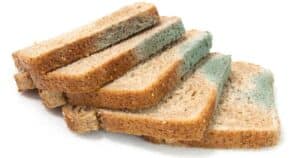Machines are now able to produce a multitude of aerated products, such as dough having undergone little outgassing, with powerful aromatic potentials, an under-oxidised crumb, and keeping for more than 8 hours thanks to the use of stress-free processes, while offering reasonable output rates. In this latter connection, there are even some specialised single product lines capable of supplying 10,000 baguettes/hour.
New bread recipes promoted by snacking
Let us not forget that consumption patterns also influence the technology that surrounds us. Let us take the example of snacking. While it is true that snacking reflects a nomadic, destructured, individualised dietary mode, it has also led to the necessity for products that are easily sliced, baked off and filled to improve work-time flexibility and thus offer more convenience and efficiency. But this can also lead to genuine innovations in bread products, where a non-deformable crumb with a controlled saturation threshold is better suited to the requirements of ready-prepared sandwiches. Bread that crumbles less, or not at all (wraps, polar bread, flat bread, crustless sandwich loaves). And what about the idea of a microwavable bread that loses none of its organoleptic properties?
In another matter, the speed of distribution is bringing us closer to the site of consumption, and thus promoting the fast-track circuit, which itself is dictating the freshness of the finished product and the development of new dedicated ferments. These include yeast ferments specially developed for refrigerated dough, or dough that is tolerant to final proofing at room temperature.
An array of breads for all appetites
These structural changes are gaining a firm foothold throughout the industry, which is thus redefining itself accordingly. Distribution networks, large and medium-sized supermarkets and the ramifications into B2C… large groups adapted to these trends are springing up everywhere: sandwich chains, “contemporary” style bakeries offering ethnic and indeed “ethical” bread…
Technological innovation adapts to market developments by offering genuine novelty. Speciality bread ranges are beginning to see the light of day, such as the limited edition of special mixes brought out for the last football world cup. And what if bread were to fulfil a purpose beyond technological progress and become a purely gastronomic product?




